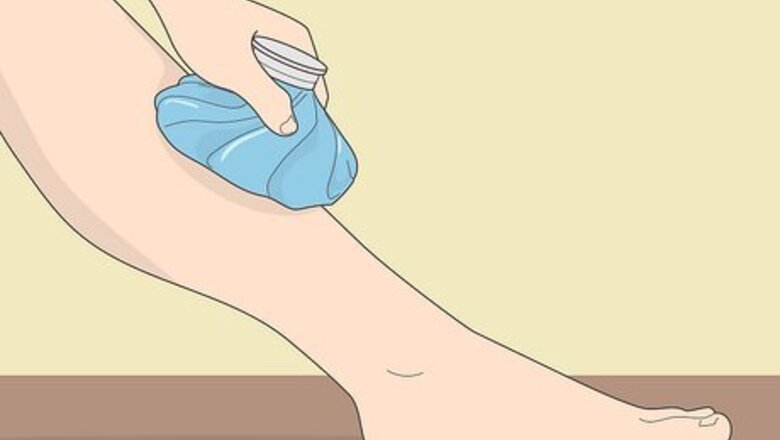
views
Ice your shins every 2-3 hours.
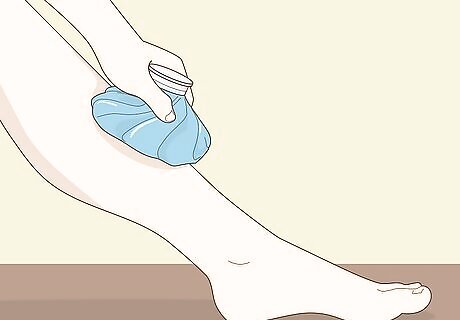
Icing is a quick way to reduce swelling and inflammation. Wrap some ice packs or ice cubes in a thin towel and hold them against each shin for 15-20 minutes at a time. Do this 4-8 times a day for several days until your shin splints feel better. Bags of frozen peas or other frozen vegetables make great improvised ice packs!
Stretch your shins.
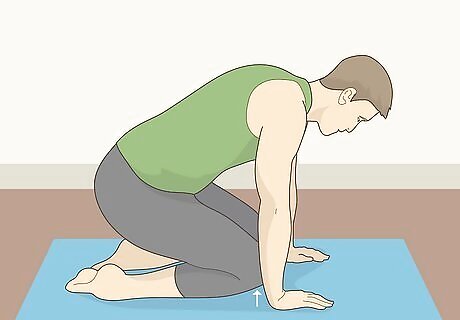
Flexibility exercises can help get rid of shin splints faster. Sit on the ground with your lower legs underneath you, so the tops of your feet and your shins are against the floor. Slowly lean forward, then press your hands into the ground and lift your knees up to deepen the stretch. Hold the stretch for up to 30 seconds and do up to 3 repetitions, or as many as feels comfortable to you. If this stretch causes more pain in your shins, stop the movement to avoid exacerbating your pain.
Do therapy band foot flexes to add arch strength.
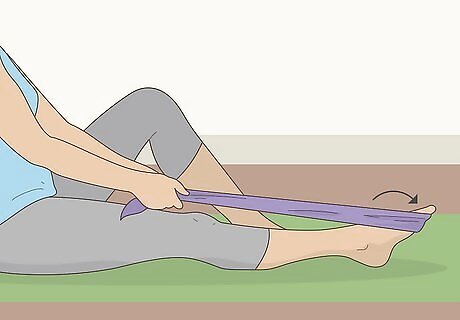
Making your lower legs stronger is a great way to cure shin splints. Sit on the ground with your legs straight out in front of you. Loop a therapy band around the toes on 1 of your feet. Flex your feet as far forward as you can, then pull them back towards you to complete 1 rep. Do this for as many reps as you can, then repeat the exercise on the other side.
Do calf raises to strengthen your calves.
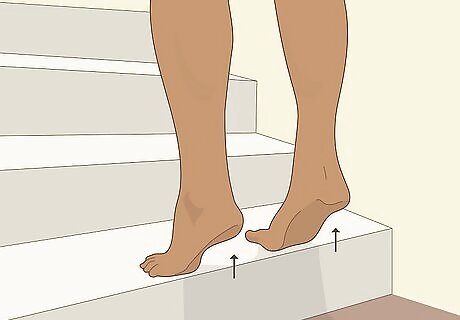
This is another low-impact way to strengthen your lower legs. Stand on the balls of your feet on a stair or another flat, raised surface. Move your heels up and down with your tippy toes for as many reps as it takes to feel a good workout in your calves.
Wear calf compression sleeves.
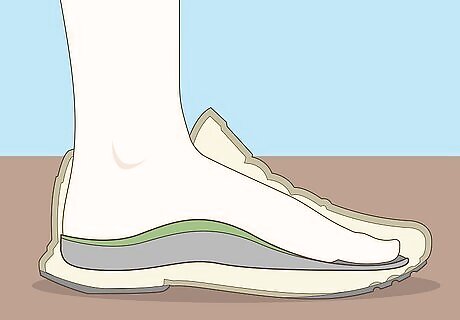
This can prevent further swelling. Slide an elastic compression bandage over your calves and shins on each leg. Wear the compression sleeves whenever you’re moving around during your daily activities until your shin splints are gone. Compression sleeves are also known as compression socks.
Use supportive shoes.
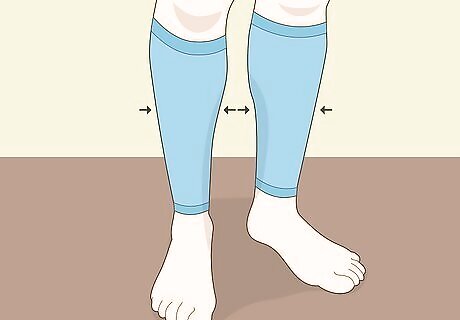
The more support your feet have, the faster shin splints go away. Wear shoes with good arch and heel supports whenever you’re up and moving around or doing any type of exercise. Add shock-absorbing orthotics or arch supporting insoles to your shoes for even more support. Sometimes, worn-out shoes can be the cause of shin splints. A good rule of thumb is to replace athletic shoes every 6 months or after 500 miles (804.6 km) of running or other heavy use.
Use a foam roller on your shins.
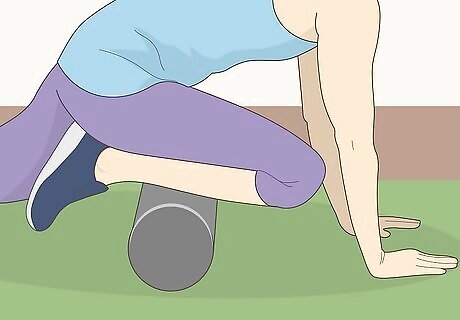
A foam roller basically lets you give yourself a massage. To treat shin splints, put a foam roller on the floor, then get on your hands and knees with the foam roller underneath 1 of your shins. Use your hands to pull and push your body back and forth, so you’re moving your shin back and forth over the foam roller and applying soothing pressure to it. Repeat this on the other side.
Take over-the-counter pain meds.
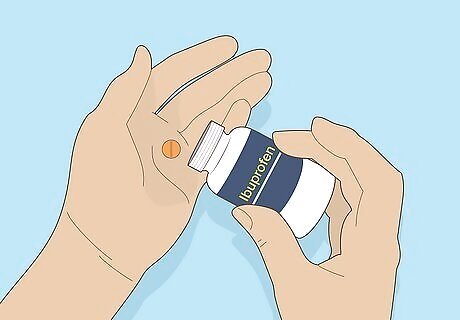
OTC pain medications can provide fast pain relief. Take a painkiller like ibuprofen, acetaminophen, or paracetamol according to the package’s instructions. Don’t exceed the recommended dosage or frequency with the medication. Note that painkillers don’t cure shin splints, but they can help reduce pain, swelling, and inflammation while you try other treatments.
Reduce high-impact exercise for 2-4 weeks.
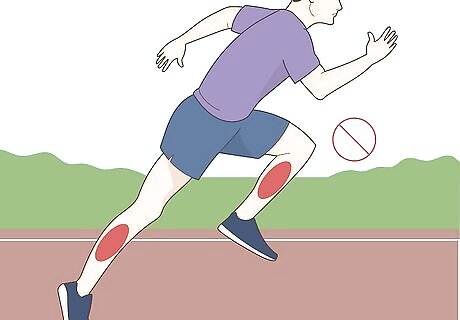
Shin splints are caused by certain activities, so take a break to let them heal. Stop running or doing whatever other type of physical activity led to your shin splints. Wait until the pain is gone for about 2 weeks before returning to the activity, or the splints might just come right back. You don’t have to stop exercising completely, but switch to a different type of low-impact training like cycling, swimming, or yoga while your shin splints are healing.
Increase physical activity gradually if pain improves.
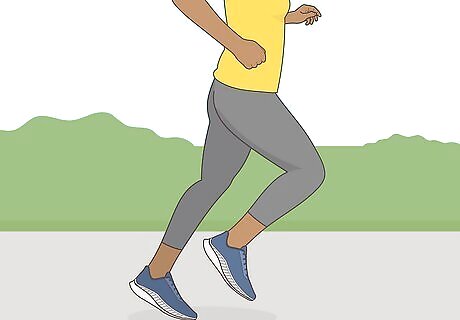
After about 2-4 weeks, you can start easing back into your regular exercise. Start running or doing a different type of high-impact exercise gradually and at a lower intensity than you were doing before. Monitor your shins for pain and stop doing the activity immediately if you feel like the shin splints are coming back. If the pain comes back, rest your legs from any kind of repetitive exercise for another 1-2 weeks.
See a GP if the pain doesn’t improve after 1 week.
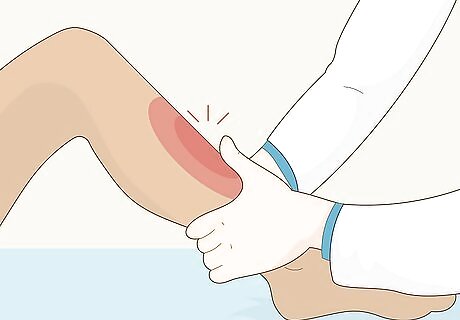
If your shin splints aren’t getting better, you may have a more serious case. After trying home treatments for about a week, schedule an appointment with your general practitioner to get your shin pain professionally diagnosed. They can prescribe treatment or refer you to a physiotherapist who can help you get rid of the shin splints fast.















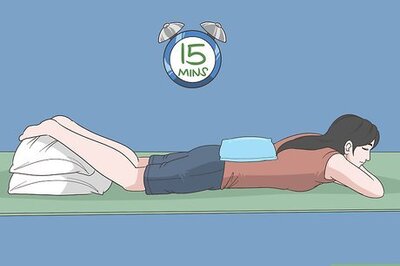
Comments
0 comment